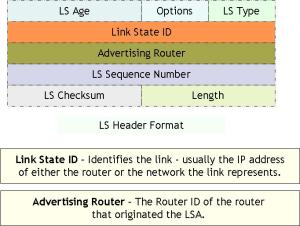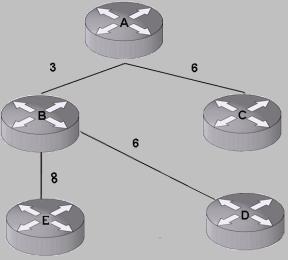I was asked a few weeks ago by our field engineers to provide a fix for the OSPF vulnerability exposed by Black Hat last month. Prima facie there appeared nothing new in this attack as everyone knows that OSPF (or ISIS) networks can be brought down by insider attacks. This isnt the first time that OSPF vulnerability has been announced at Black Hat. Way back in 2011 Gabi Nakibly, the researcher at Israel’s Electronic Warfare Research and Simulation Center, had demonstrated how OSPF could be brought down using insider attacks. Folks were not impressed, as anybody who had access to one of the routers could launch attacks on the routing infrastructure. So it was with certain skepticism that i started looking at yet another OSPF vulnerability exposed by Gabi, again at Black Hat. Its only when i started delving deep into the attack vector that the real scale of the attack dawned on me. This attack evades OSPF’s natural fight back mechanism against malacious LSAs which makes it a bit more insidious than the other attacks reported so far.
I exchanged a few emails with Gabi when i heard about his latest exposé. I wanted to understand how this attack was really different from the numerous other insider attacks that have been published in the past. Insider attacks are not very interesting, really. Well, if you were careless enough to let somebody access your trusted router, or somebody was smart enough to masquerade as one of your routers and was able to inject malicious LSAs then the least that you can expect is a little turbulence in your routing infrastructure. However, this attack stands apart from the others as we shall soon see.
OSPF (and ISIS too) has a natural fight back mechanism against any malacious LSA that has been injected in a network. When an OSPF router receives an LSA that lists that router as the originating router (referred to as a self-originated LSA) it looks at the contents of the LSA (just in case you didnt realize this). If the received LSA looks newer than the LSA that this router had last originated, the router advances the LSA’s LS sequence number one past the received LS sequence number and originates a new instance of this LSA. In case its not interested in this LSA, it flushes the LSA by originating a new LSA with age set to MaxAge.
All other routers in the network now update their LS database with this new instance and the malacious LSA effectively gets purged from the network. Viola,its that simple!
As a result of this, the attacker can only flood malacious LSAs inside the network till the router that the malacious LSA purports to come from (victim router) receives a copy. As soon as this router floods an updated copy, it doesnt take long for other routers in the network to update their LS DB as well – the flooding process is very efficient in disseminating information since network diameters are typically not huge, and yes, packets travel with the speed of light. Did you know that?
In the attack that Gabi described, the victim router does not recognize the malacious LSA as its own and thus never attempts at refreshing it. As a result the malicious LSA remains stealthily hidden in the routing domain and can go undetected for a really long time. Thus by controlling a single router inside an AS (the one that will flood the malacious LSA), an attacker can gain control over the entire routing domain. In fact, an attacker need not even gain control of an entire router inside the AS. Its enough if it can somehow inject the malacious LSAs over a link such that one of the OSPF routers in the network accept this. In the media release, Black Hat claimed ” The new attack allows an attacker that owns just a single router within an AS to effectively own the routing tables of ALL the routers in that AS without actually owning the routers themselves. This may be utilized to induce routing loops, network cuts or longer routes in order to facilitate DoS of the routing domain or to gain access to information flows which otherwise the attacker had no access to.”
So what is this attack?
Lets start by looking at what the LS header looks like.
In this attack we are only interested in the two fields, the Link State ID and the Advertising Router, in the LS Header. In the context of a Router LSA, the Link State ID identifies the router whose links are listed in the LSA. Its always populated with the router ID of that router. The Advertising Router field identifies the router that initially advertised (originated) the LSA. The OSPF spec dictates that only a router itself can originate its own LSA (i.e. no router is expected to originate a LSA on behalf of other routers), therefore in Router LSAs the two fields – ‘Link State ID’ and ‘Advertising Router’ – must have the exact same value. However, the OSPF spec does not specify a check to verify this equality on Router LSA reception.
Unlike several other IETF standards, the OSPF spec is very detailed, leaving little room for any ambiguity in interpreting and implementing the standard. This is usually good as it results in interoperable implementations where everybody does the right thing. The flip side however is that since everybody follows the spec to the tittle, a potential bug or an omission in the standard, would very likely affect several vendor implementations.
This attack exploits a potential omission (or a bug if you will) in the standard where it does not mandate that the receiving router verifies that the Link State ID and the Advertising Router fields in the Router LSA are the exact same value.
This attack sends malacious Router LSAs with two different values in the LS header. The Link State ID carries the Router ID of the router that is being attacked (the victim) and the Advertising Router is set to some different (any) value.
When the victim receives the malacious Router LSA, it does not refresh this LSA as it doesnt recognize this as its own self generated LSA. This is because the OSPF spec clearly says in Sec 13.4 that “A self-originated LSA is detected when either 1) The LSA’s Advertising Router is equal to the router’s own Router ID or 2) the LSA is a network LSA .. “.
This means that OSPF’s natural fight back mechanism is NOT triggered by the victim router as long as the field ‘Advertising Router’ of a LSA is NOT equal to the victim’s Router ID. This is true even if the ‘Link State ID’ of that LSA is equal to the victim’s Router ID. Going further it means no LSA refresh is triggered even if the malacious LSA claims to describe the links of the victim router!
When this LSA is flooded all the routers accept and install this LSA in their LS database. This exists along side the valid LSA originated by the victim router. Thus each router in the network now has two Router LSAs for the victim router – the first that was genuinely originated by the victim router and the second that has been inserted by the attacker.
When computing the shortest path first algorithm, the OSPF spec in Sec 16.1 requires implementations to pick up the LSA from the LS DB by doing a lookup “based on the Vertex ID“. The Vertex ID refers to the Link State ID field in the Router LSAs. This means that when computing SPF, routers only identify the LSAs based on their Link State ID. This creates an ambiguity on which LSA will be picked up from the LS database. Will it be the genuine one originated by the victim router or will it be the malacious LSA injected by the attacker? The answer depends on how the data structures for LS DB lookup have been implemented in the vendor’s routers. Ones that pick up the wrong LSA will be susceptible to the attack. The ones that dont, would be oblivious to the malacious LSA sitting in their LSA DBs.
Most router implementations are vulnerable to this attack since nobody expects the scenario where multiple LSAs with the same Link State ID will exist in the LS DB. It turns out that at least 3 major router vendors (Cisco, Juniper and Alcatel-Lucent) have already released advisories and announced fixes/patches that fixes this issue. The fix for 7210 would be out soon ..
Once again, the attacker does not need to have an OSPF adjacency to inject the forged LSAs.
Doing this is not as difficult as we might think it is. There is no need for the attacker to access the LS DB sequence number – all it needs to do is to send an LSA with a reasonably high sequence number, say something like MAX_SEQUENCE – 1 to get this LSA accepted.
The attack can also be performed without complete information about the OSPF topology. But, this is highly dependent on the attack scenario and what piece of false information the attacker wishes to advertise on behalf of the victim. For example, if the attacker wishes to disconnect the victim router from the OSPF topology then merely sending an empty LSA without knowing the OSPF topology in advance would also work. In the worst case, the attacker can also get partial information on the OSPF topology by using trace routes, etc. This way the attacker can construct LSAs that look very close to what has been originally advertised by the victim router, making it all the more difficult to suspect that such LSAs exist in the network.




